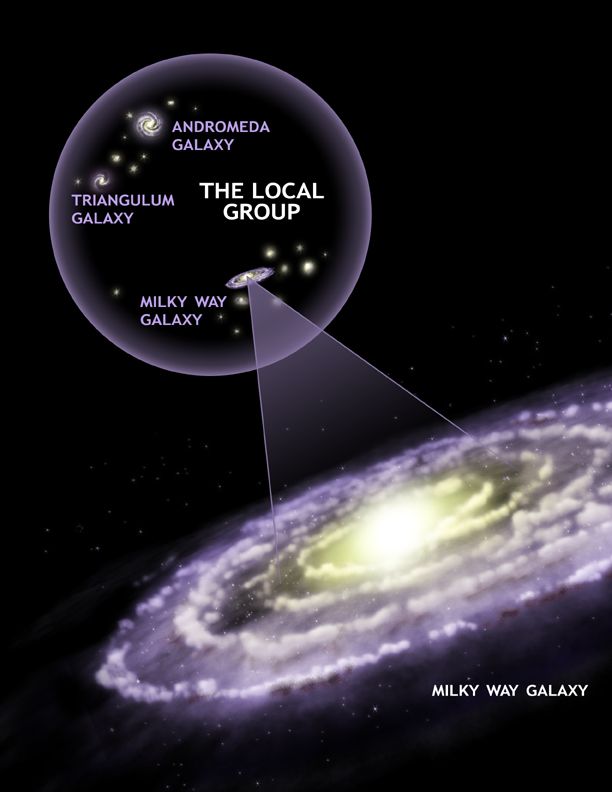The most beautiful type of galaxies are Spiral Galaxies. Their long twisting arms are areas where stars are being formed.
Where do the spirals come from?
Like ripples in a pond, the spiral arms seen in this kind of galaxy are circling waves. These waves cause new stars to form. That's right, they are like star farmers, planting star seeds where ever they go.
What causes the waves to glow?
Some of the new stars created in the wave are very large. Because of their size these large stars glow brighter than their smaller cousins, causing the nearby dust clouds to glow brightly. Thus any area near one of these waves glows like a fluorescent light.
In other words you can't actually see the waves, the spirals that we see are the glowing clouds illuminated by large, hot stars. As the waves move on the clouds behind them dim down, no longer glowing until another wave passes through.
Why doesn't the whole galaxy shine brightly?
The large bright stars created in the waves don't live very long. Their large size makes them burn all their fuel quickly. Usually they die before they ever leave the wave. Only the smaller stars which do not glow brightly survive to leave the waves they formed in.


.jpg/300px-NGC_4414_(NASA-med).jpg)